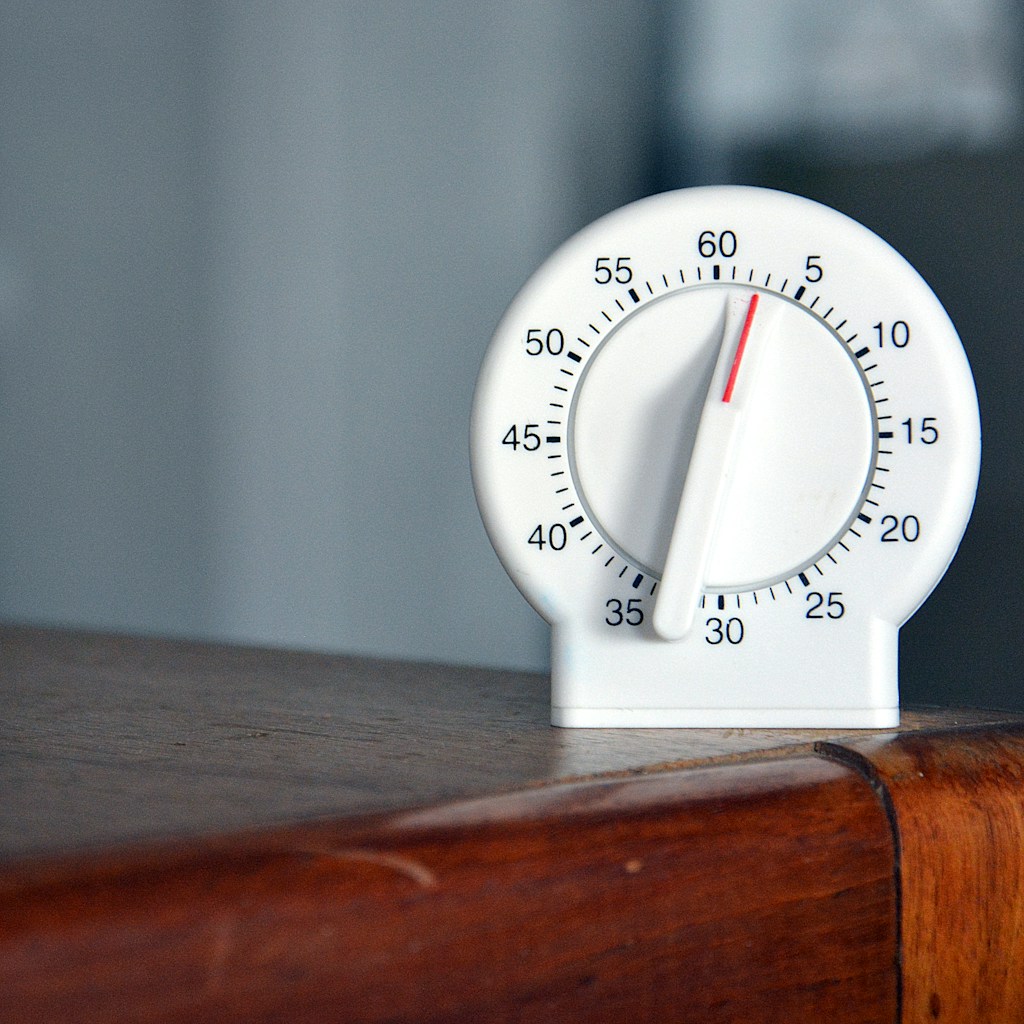I have a dirty little secret that I probably share with many other writers and editors. I can sit at my desk for hours without getting up. The hardest ring to close on my Apple Watch is that blue stand one. I’m glued to my computer with my rear in my chair for most of the day. I know how unhealthy it is to sit all day, but I don’t seem to feel it when my watch tells me it’s time to move. You know how it is when you’re in the zone. So, I decided to try the Pomodoro Technique. I figured that working in sprints would help me get up and move more. Here’s what I learned from a month of Pomodoro.
What is the Pomodoro Technique?
First, I suppose I should explain what I’m talking about for those of you who’ve never heard of Pomodoro. The Pomodoro Technique is where you work in 25-minute intervals. After each 25-minute pomodoro, you take a five-minute break. After you do this four times, you get a 15-minute break.
Francesco Cirillo developed the productivity method in the late 1980s as a student. He named it Pomodoro, which is Italian for tomato, because the kitchen timer he used was shaped like the fruit. His goal was to get more things done by encouraging focus and a flow state.
The steps in the Pomodoro Technique are simple:
- Choose a task you need to complete.
- Set a timer.
- Focus only on that task until the timer rings.
- Take a break.
- Repeat
The technique caught on and is commonly promoted by productivity experts. I heard of it years ago but never tried it.

Benefits of the Pomodoro Technique
I decided to try Pomodoro to keep me moving throughout the day, but people use it for many other reasons. My guess is that people have discovered a ton of benefits, but there seem to be some positives commonly associated with the technique.
Benefits of the Pomodoro Technique include:
- Forces Momentum. If you’re anything like me, you procrastinate when you’re uncertain, but when you have a timer ticking, you have to get started. It doesn’t matter where you start. You will begin because you see your time passing.
- Simplifies Tasks. It makes tasks less overwhelming because you can break them up into small bites that you can complete in 25 minutes. Working on something for 25 minutes, regardless of whether you’ve broken the project up or not, seems a lot easier.
- Improves Focus. Like me, you’ve probably got things dinging and ringing all day. It’s easy to get distracted from what you’re doing and go ahead and check that Slack message, but you won’t do it if you’re working by a clock. Also, taking more frequent breaks helps you feel refreshed when you return to your desk and approach the next 25 minutes of work.
- Eliminates Multitasking. This point goes along with focus, but you hone in on the one activity you’re working on when you know your time is limited.
- Creates a Sense of Urgency. You work more quickly and effectively when you’re on a timer. I guess that’s really what I’m trying to say with many of these other points.
Choosing a Pomodoro Timer
When I decided to try the Pomodoro Technique, I needed to choose a way to time myself. At first I considered just setting a timer on my iPhone, which stays on my desk. But I decided against that because it seemed bulky. It also meant that I’d be touching my phone every 25 minutes, which seemed like a bad idea. Talk about the opposite of productive!
I also considered just using a kitchen timer, but I don’t know where mine is and tend to use the microwave as a timer when I’m actually cooking.
So, I decided to look online for Pomodoro timer apps. Of course, there are a ton. I downloaded Tomito on my desktop for free and started my experiment. It has a clean design and is easy to use. I recommend it.
What I Learned From a Month of Using the Pomodoro Technique
I just love to use myself as a guinea pig. I’m all about development, so I’m always trying something to help me improve. I expected a lot of benefits of Pomodoro. All of the things I listed above as benefits rang true to me. But some other things happened too.
I Was Way More Focused
The focus aspect of Pomodoro rang true for me. I could tell almost immediately that I was more focused because I could see the timer counting down at the top of my computer screen. I also think I could move into a flow state more quickly because I just put my head down and worked.
I Worked Through Breaks
One of the unfortunate things that happened almost immediately was that I noticed I worked through multiple breaks. Once I was focused on a task, I didn’t want to stop. If I was editing a piece, I didn’t want to stop in the middle, so I would finish it up, then go on a break. If I was writing, I often just worked through the break and found the timer as more of a disturbance. That leads me to my next point.
It Doesn’t Work for Writing
I stopped using the timer when I was writing after maybe a week. You know how difficult it is to get in a flow with writing. The timer going off annoyed me and distracted me from my work. I stopped using it when I was writing because I didn’t want to lose my train of thought. When the words are coming, you just don’t interrupt that. In my opinion, Pomodoro isn’t good for writers.
I Waited for Breaks
Once I commit to something, I do it all the way. That’s why I found myself looking at the timer when my coffee cup was empty to see when I could go refill it. That wasn’t terrible, but my dogs quickly reminded me that bathroom breaks (mine and theirs) should wait for no tomato clock!
I Did More Chores
I work from home, so I have the luxury of doing little household chores throughout my day. My breaks were a great time to change the laundry or go check the mail. So, I got more done at work and home. I also met my stand goal more easily and got little bits of exercise throughout the day.
The Final Verdict
My final verdict on the Pomodoro Technique is that it’s good for many things, but writing isn’t one of them. I was often flexible about the timing when I was in the middle of something — working for 30 minutes instead of 25, so I could finish editing a piece, for example.
The benefits of the Pomodoro technique are real. I felt more focused and got more done. But I got annoyed when I realized one day that I was waiting for a timer to go off so I could take a bathroom break. That’s not it.
In the end, I haven’t used the timer in a couple of weeks. Maybe I found it more disruptive than helpful. Maybe old habits are difficult to break. But either way, I’m having trouble reaching my stand goal again.



